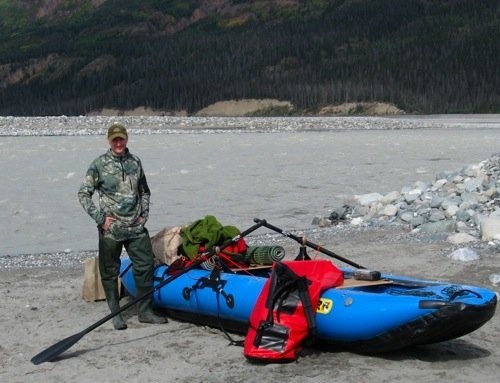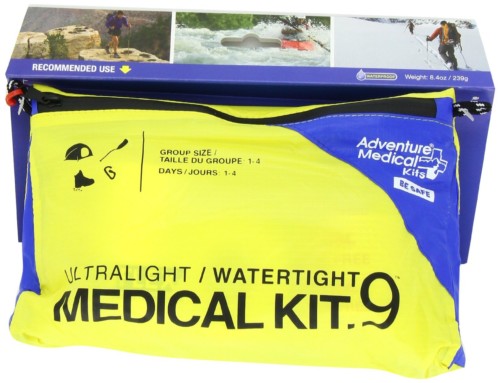In my professional world I deal with all sorts of numbers, trends, statistics, and percentages. I transfer these skills to my passions, and using my planning and Excel skills I build pack lists and organize my excursions. This skill set has evolved since moving to Alaska, and my overall field success ratio (%) is lower than I would like it to be. Analyzing this trend led to me several conclusions.
My L48 pursuits were far less complex, and species pursued were more available. Additionally I was more of a meat hunter, willing to take the first legal animal that came my way. I grew up hunting in a specific manner with my family, utilizing the same techniques that have been handed down from generation to generation. In other words we knew what we are doing, where to go, and how to hunt the critters we were pursuing. I also had immediate access to “huntable” species and terrain. A ten minute drive and I be could hunting grouse, varmints, and deer. While my family has always traveled to a specific location for our main hunting camp, day and weekend hunts were easy to do. I never hunted out of my home state and chiefly focused on Mule Deer with little thought to other big game creatures.
It was not until I moved to Alaska in 2006 that broader big game hunting became a focus and reality. Alaska hosts an abundance of species and hunting opportunities, but even here in a massive land of opportunity I got stuck on one specie. Ovis Dalli, or Dall Sheep, and in particular a full curl Dall Ram. Having little experience with such creatures my first few ventures were more learning than hunting. After that I blundered my way through a few seasons fine tuning skills and building the knowledge needed to succeed.
Along the journey I drew a meat hunt tag for a cow moose and was able to fill that tag in a weekend hunt, a rare exception for Anchorage Alaskans (good tags sure help!). I also have taken a variety of 3-4 days trips chasing other critters over the years. Despite a large number of adventures my success ratio is low. I needed to better understand why. Perhaps my analysis will seem like justification for mediocrity, but I believe that it highlights the complexity that Alaska brings and pin points the key factors needed to increase my success ratio. Additionally, it highlights the question, as to the need for success to still enjoy and passionately pursue the hunt.
Logistics:
As an Alaskan that calls Anchorage home, half my battle is getting to my starting point. Alaska is the largest state in the Union with a limited road network. Most trips involve a combination of tactics to get somewhere. i.e. Drive, fly, hike, float. Drive, ATV, hike. Etc.
I’ve driven as close as the local airport, and as far as points north of Coldfoot in the Brooks Range, a 20hr+ drive covering over 700 miles of Alaskan roads. Upon reaching the location where the truck can go no farther one must then grab a flight, jump on a raft/boat, start up the ATV, or lace up the boots and start trucking. Often trips include multiples of each alternative. Road hunting in Alaska is rare and very limited.
Once you get to your area you are truly remote. This is a trip where your ability to put it all together (skills, equipment, endurance, and techniques) is tested.
Conditioning:
Part of getting there and actually hunting once you get there is based on your physical fitness. For more on fitness check out my thoughts on Mountain Fitness. To summarize cardio is OK, but strength is what gets you there and back. Understanding what you need and what makes you better in the mountains take time and experience. It took a trip or two to understand what I need, and now I am constantly fighting to get in better shape, regardless of my condition.
Finding a Trophy:
In my mind a full curl Dall Ram is one of the premier trophies of North America.
Part of what makes this trophy so unique is the work, effort, and skill it takes to bring one home. You can mitigate your way to a trophy by utilizing a guide, gaining some lucky data, or paying more (i.e. air taxi) to get closer to the Rams. All of my hunts have been DIY and I have spent less than $2000 in air taxi fees the 8+ years I have been in Alaska. As a rule of thumb, the DIY Alaskans, that seem to get a Ram every year, either have access to a plane, pay higher dollar for a good air taxi service, and/or are able to spend the time scouting their chosen area. Another key factor is days in the field. Some are able to get into 2+ hunts in and really utilize the entire season.
You can argue about gear, pack weight, and whole host of other factors, but in my mind your success is primarily dependent on your ability to get to your ram. So you must have a solid logistical plan and be in physical and financial condition to execute that plan. Underpinning that strategy is your ability to implement it in an area a legal ram calls home. You can shorten your learning curve by partnering with a local expert, increasing your days in the field, or by throwing money at it and choosing an air taxi service that has a reputation for putting hunters in high success areas.
Or like me, you can simply enjoy the learning curve. Every day in sheep country is blessing. Despite the glory of success, it is not necessary to a grand adventure. Each sheep hunt is a mind full of memories and learnings, an exercise that increases your skill set.
Re-framing Expectations:
Once you are OK with this premise, success ratio is not as important. I always want to take a ram and there is a sense of disappointment when the trip is over and the rams are still out there, but if the only reason I go is to kill a ram I am missing the big picture. Once the hunt is past, and you look backward its really the journey that matters, the pursuit vs. the kill. A “kill” without a journey is hollow and somewhat empty.
In my mind the biggest key to success is time afield. I can’t punch a tag from sitting behind desk! Finding a way to scout and spend more time afield is a life / work balance that differs for all of us. Hopefully as time goes by I can better manage that balance.
I have developed a sheep hunting strategy that requires logistical hardships, physical exertion, and I am getting to know the areas I am hunting. My familiarity with the terrain combined with a solid logistical plan increases my potential for success. Now I just need to execute that plan and see what happens. In the meantime I continue to research areas and air taxi services for future hunts to even better my odds. For 2015 this did not pan out for a Ram, but I was blessed to punch a tag on a beautiful caribou bull.
Despite all this, many hunters seem to just be born lucky. Every time they go afield critters magically present themselves. I’m not that guy, I’m ok with that, but often wish I was “that guy.” 🙂 In the meantime the pursuit of knowledge and skills is an exciting part of the journey, a pursuit that will never end.













Leave A Comment